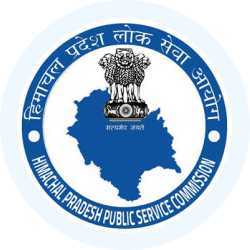Economy of District Mandi | HPPSC HPAS Preparation - HPPSC HPAS (Himachal Pardesh) PDF Download
| Table of contents |

|
| Introduction |

|
| Agriculture |

|
| Irrigation |

|
| Horticulture |

|
| Fisheries |

|
| Animal Husbandry |

|
Introduction
The district is known for its diverse agricultural practices and resource management, supporting a range of activities from cereal production to advanced horticulture and animal husbandry. This overview provides insights into the key aspects of these practices and their contributions to the local economy and community.
Agriculture
Major Cereal-Producing Areas: The Balh valley in Sundarnagar block, Sandhol areas along the Beas river in Dharmpur block, and the Jogindarnagar valley are notable for their cereal production. These regions are crucial for meeting the food demands of the district's sizable population.
Agricultural Workshop: There is a workshop located at Bhangrotu that focuses on the design and testing of improved agricultural tools. It also provides services for the repair and maintenance of various types of farm machinery.
Potato and Seed Development: The district supports four dedicated potato development stations and five seed multiplication farms, which are essential for enhancing the quality and yield of crops.
Irrigation
- Lift Irrigation and Wells: The introduction of lift irrigation has significantly improved water availability for agriculture. Additionally, shallow wells have been dug using German rigs as part of the Indo-German Agriculture Projects, especially in the valley areas, to support irrigation.
Horticulture
Apple Orchards: The district boasts extensive apple orchards primarily in Karsog, Chachyot, and Thunag. Common apple varieties include Royal Rich-E-Red, Red, and Golden.
Plum Varieties: The district produces specific plum varieties such as Sentaroza and Merycoza.
Fruit Processing and Preservation: Surplus fruits, which may not be marketable, are processed at two canning and fruit preservation plants located in Panarsa and Jarol. Additionally, an apple juice processing plant at Jarol provides a significant market for surplus apples.
Olive Cultivation: An olive station operates in Karsog, contributing to the district’s horticultural diversity.
Fisheries
Trout Fishing: Exotic trout fish were introduced from Kullu and can now be found in the Uhl, Lambadag, and Tirthan rivers. The district's rivers are rich in fisheries resources, with notable species including Mahasheer fish in the Satluj River and various other fish like Barbustor, Labeo diplostomus (Gid), Labeo dyochelous (Kuni), and Oreigus Sinuatus (Himalayan Barbel) in the Beas and Satluj rivers and their tributaries.
Trout Hatchery: A well-stocked trout hatchery at Barot on the Uhl River supports the sustainable management of trout fish populations.
Animal Husbandry
Jersey Cattle Breeding: The district has two Jersey cattle breeding farms located in Kamand and Karsog. These farms work to supply improved breed animals.
Feed and Fodder Development: Two centers focused on feed and fodder development are operational in Kamand and Sinog, providing essential resources for animal nutrition.
Dairy Plant: The dairy plant at Chakkar, established in collaboration with the Indo-German program, produces quality milk products including ghee and table butter.
Sheep Breeding Station: A sheep breeding station in Nagwain, part of the Indo-German program, focuses on improving the breed of sheep, specifically pure Merino sheep.
FAQs on Economy of District Mandi - HPPSC HPAS Preparation - HPPSC HPAS (Himachal Pardesh)
| 1. Himachal Pradesh में कृषि और सिंचाई के मुख्य स्रोत कौन से हैं? |  |
| 2. Mandi जिला में पशुपालन की स्थिति क्या है? |  |
| 3. हिमाचल प्रदेश में मत्स्य पालन के अवसर क्या हैं? |  |
| 4. Mandi जिले में पशुधन विकास के लिए कौन सी योजनाएं कार्यान्वित की जा रही हैं? |  |
| 5. हिमाचल प्रदेश में कृषि और सिंचाई की चुनौतियाँ क्या हैं? |  |

|
Explore Courses for HPPSC HPAS (Himachal Pardesh) exam
|

|
















